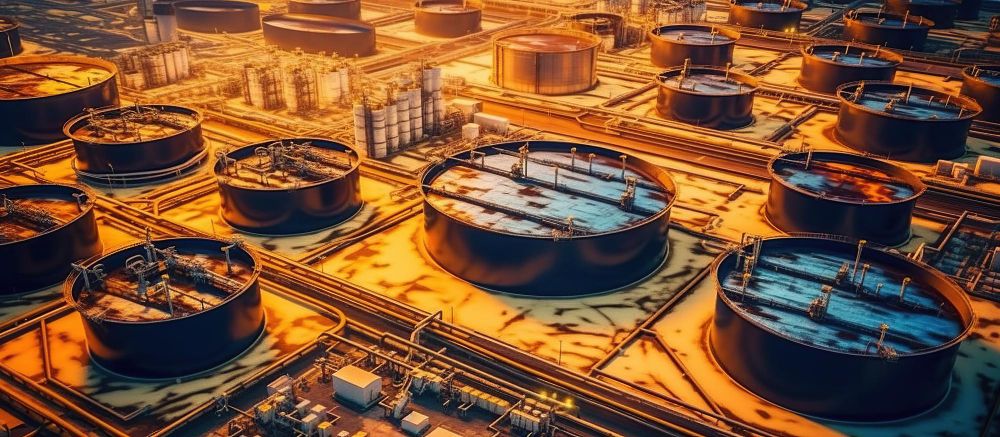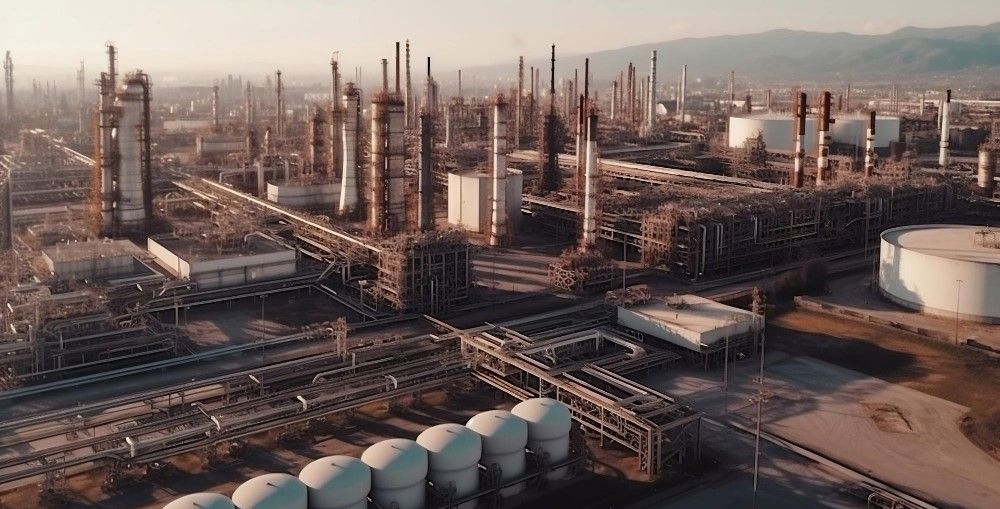The European chemical industry is already showing signs of coming under pressure. So, with economists predicting a global slowdown or sluggish growth throughout 2024, how will its chemical industry manage the extreme market conditions? Even if they do outlive the recession, will European chemical manufacturers be able to survive their long-term economic disadvantages?
Germany
Despite a marginal increase in output during the third quarter of the current year, the outlook for the German chemical sector, typically a stalwart for the wider European economy is now failing to grow.
As Markus Steilemann, chief executive at Covestro and president of the German chemical industry council, the VCI, recently made clear, “The German chemical industry is treading water and hopes of an improvement by the end of the year are fading.”

The forecast was based on the association reporting a 6.1% drop in Q3 chemical production volume and a 13.8% fall in revenue. The data also showed a predicted 14% drop in pharmaceutical sales and an 8% decline in pharma production output.
“Although the trough appears to have been reached, a turnaround is not yet discernible,” confirmed the association’s statement.
The gloomy outlook is largely the result of geopolitical uncertainty and economic concerns over the Chinese economy’s debt and housing bubble. A situation which is keeping energy prices high and raw material supply chains volatile.
“The government's electricity price package will not be enough to raise the international competitiveness of our companies to a new level,” Steilemann added. “We are still missing real relief for our energy-intensive industry.”
France
France’s chemical industry has also suffered from the energy price crisis despite having several nuclear power stations (unlike Germany which had its decommissioned following the Fukushima disaster).
That is not to say that the French chemical industry is succeeding, moreover that it is not suffering as badly as its German counterpart.
“Germany's gas-hungry chemical industry has seen production fall 18% from 2019 levels,” observes Charles-Henri Colombier from the Parisian economic think tank Rexecode. “In France it is only 8%.”

This is partly because France’s more stable source of energy has helped to shield chemical manufacturers from some of the cost increases. However, it still relies heavily on natural gas, as well as other market volatile raw materials, as a feedstock. It also relies on the German chemical industry as a customer. Consequently, the French chemical sector saw a 3.3% fall in output during 2022, with forecasts for 2023 and beyond being similarly pessimistic.
As Luc Benoit-Cattin, president of the France Chimie association stated during a recent conference, “We have rather a low level of confidence of our members”, adding a third of them are “… anticipating a reduction of investments or a freeze of recruitments.”
The UK
Across the water and outside of the EU, the UK’s chemical industry is also reporting lower production output, declining sales, and a drop in capacity utilisation.
The data comes from a survey of 50 British chemical manufacturers, which found that during Q3 of 2023 86% of those businesses anticipate flat or declining sales, while 57% reported a decrease in output and unused capacity. While the challenges of boosting exports while outside the EU single market cannot be ignored, even the internal market suffered, with sales to domestic customers increasing for just 4% of the chemical companies surveyed.

“There is no hiding the fact that these survey results make for grim reading, with nine out of ten businesses anticipating reduced or, at best, static sales and optimism drifting further out with each passing quarter,” explained Steve Elliott, Chief Executive of the UK’s Chemical Industries Association. “In the short term we must do all we can to minimise the industry’s cost base – especially energy prices over the coming winter – and secure a more competitive net zero policy environment and funding landscape for our sector. Success here will give us a stronger platform for UK chemicals trade and investment growth when those global economic conditions start to improve.”
Over a third of the survey’s respondents expect performance to worsen due to the advent of winter energy costs and challenging internal economic conditions such as slowing demand and cheaper foreign imports entering both the EU and UK market.
“With over two-thirds of companies foreseeing challenging operating conditions and weakening demand, coupled with production costs that remain over 20% higher than pre-pandemic levels, there is little room for medium-term optimism within the industry,” concludes Michela Borra, an economist at the UK’s Chemical Industries Association.

Competition
As a whole, the EU chemical industry output declined by 6.2% in 2022.
While this could be explained as a natural contraction in line with a global slowdown, in many ways Europe is an exceptional victim of inflation, monetary tightening, Russian sanctions, supply chain logjams, and high energy prices.
Whereas the Middle East has a wealth of fossil fuel feedstocks and a powerful invest fund, and the USA has a powerhouse investment plan following the Biden administration’s Inflation Reduction Act supplying €400 billion towards green investment in industry, the European chemical sector looks disjointed, feedstock poor, and investment weak.

Power Costs
Most notable for an industry with large energy costs, has been Europe’s disadvantaged position for cheap electricity.
As a recent report in the industry journal Energy News states, “… the cost of a kilo of decarbonated hydrogen produced in the United States and sold in Europe amounts to ‘€2 per kilo’ while it takes ‘€7 in Europe’ to produce a kilo of decarbonated hydrogen.”
“Even with a normalized electricity price around 50 euros per megawatt hour, we would still be at €4 per kilo in Europe,” notes Cattin. “We would still have a competitive gap.”
For this reason, Cattin sees the expansion and reform of the electricity market in Europe as a crucial step to saving the chemical sector. The French chemical industry alone has forecast that it will need an additional 7 Twh per year on top of its current 20 Twh annual consumption. All at a competitive price while maintaining net zero commitments.
“Investments will continue in Europe, but they are likely to be reduced because the competitiveness of companies is affected,” explains Cattin. “They generate less cash flow, and this leads them to be more cautious in the way they look at the short term.”

Market conditions are always changing. But it seems that the European chemical industry has reached a sea change moment, where the drive towards net zero, limited investment, stricter legislation, feedstock shortages, and higher energy prices are all combining to create an insurmountable competitive disadvantage. An economic situation that no chemical business is able to overcome.
For more than a century, European chemical companies have enjoyed the lion’s share of investment, wealthy markets, an educated workforce, and plenty of innovation. Nothing, however, lasts forever.
As Cattin notes, “The dynamics we have known until now could simply run out of steam.”
Photo credit: Freepik, WangXiNa,Tohamina, WangXiNa, Starline, Macrovector, & Freepik